Due to the generous donation received from the AAHT, Norwich Castle has significantly supplemented its collection of replica medieval arms and armour. Previously, visitors to the castle have found the arms and armour talks to be one of the most engaging events held at Norwich Castle, with 90% of visitors rating it as excellent in 2015 and 92% in 2016. Thanks to the AAHT’s grant the Arms and Armour Talks received an incredible 98% excellent rating last year (2018).
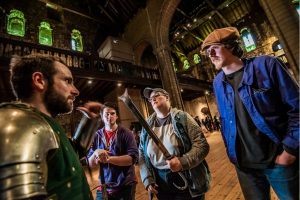
The additional equipment that the AAHT grant allowed us to produce has filled significant gaps in the timeline of the evolution of medieval arms and armour. As a result, we have been able to depict a range of historic soldier’s equipment across different strata of feudal life throughout the middle ages. Visitors of all ages, interests, backgrounds and genders have been able to understand the variety of equipment that was used and develop a greater emotional connection to the past. Importantly, we have also used examples of skeletal remains to ground the talk with the reality of medieval warfare, revealing the true, terrifying effects of the weaponry to highlight why evolving designs of armour were essential to surviving the medieval battlefield.
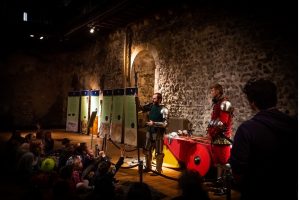
The Arms and Armour Talks have been enjoyed by thousands of visitors since the collection was improved and have featured throughout the summer holidays and at all the major public events held at Norwich Castle such as Heritage Open Day, Museums at Night, and televised on Children in Need!
We have received heartfelt feedback from visitors who have really begun to appreciate the skill, science and engineering that can go into making arms and armour – or the hurried conversion of farming tools to makeshift weapons. Visitors can now appreciate the sense of panic that peasants would feel as trained and armoured knights charge towards them, or the replica designer rolex daytona 40mm mens 116568 watch oyster bracelet feeling of invulnerability that a full harness of armour could provide. We have received wonderful stories from children who have been inspired by the collection and adults who have taken their new-found interest to the next level by taking up blacksmithing.
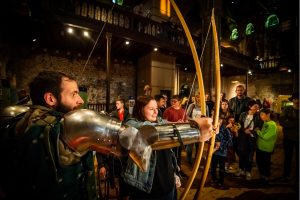
The benefits of the improved Arms and Armour collection have been felt beyond the public Arms and Armour talks. Summer schools, scout groups, home educators, and youth groups have all requested arms and armour sessions as part of their visit to Norwich Castle. The daily tours of the castle now use the hand-crafted 140lb draw weight longbow to engage with visitors, dispel myths, and help them to appreciate the incredible strength that would have been required to use this iconic weapon. School groups have been requesting additional sessions on medieval arms and armour to begin their topic on medieval history. Our upcoming outreach program, ‘A Knight Out’, will be taking the show on the road to thousands of people at events across the country next year. The improved arms and armour collection now features proudly in the visitor experience of Norwich Castle.
The grant received from AAHT has allowed all of this to happen, fascinating people with the history of arms and armour, which we shall continue to do for years to come.

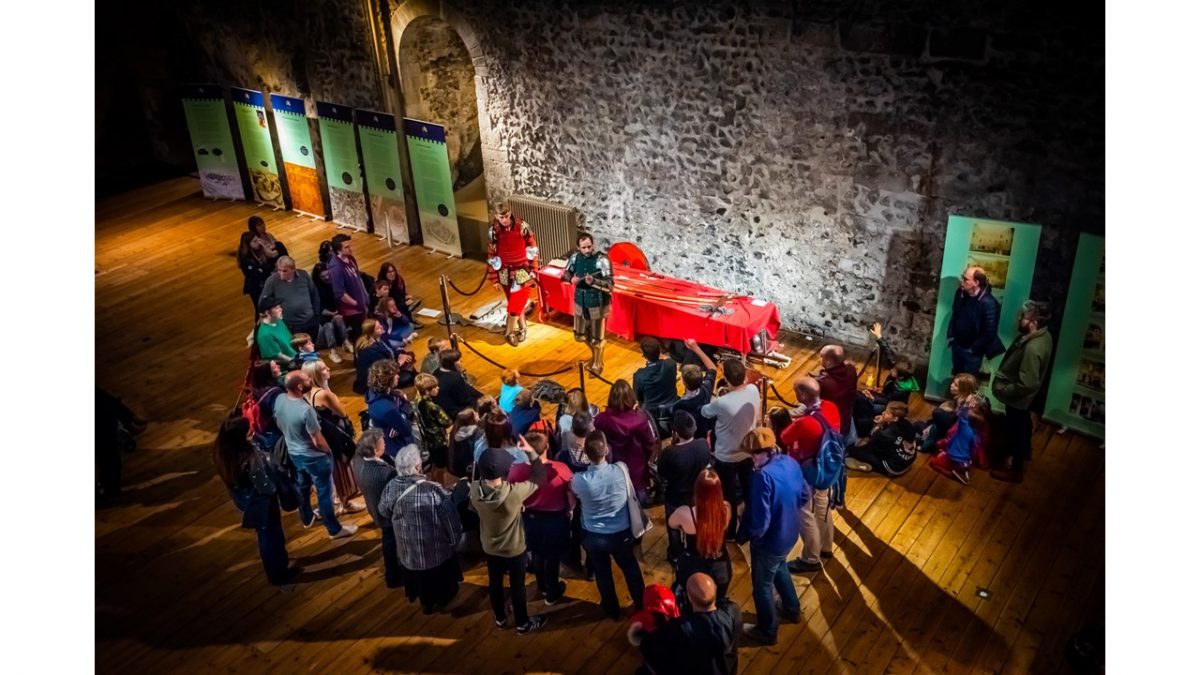
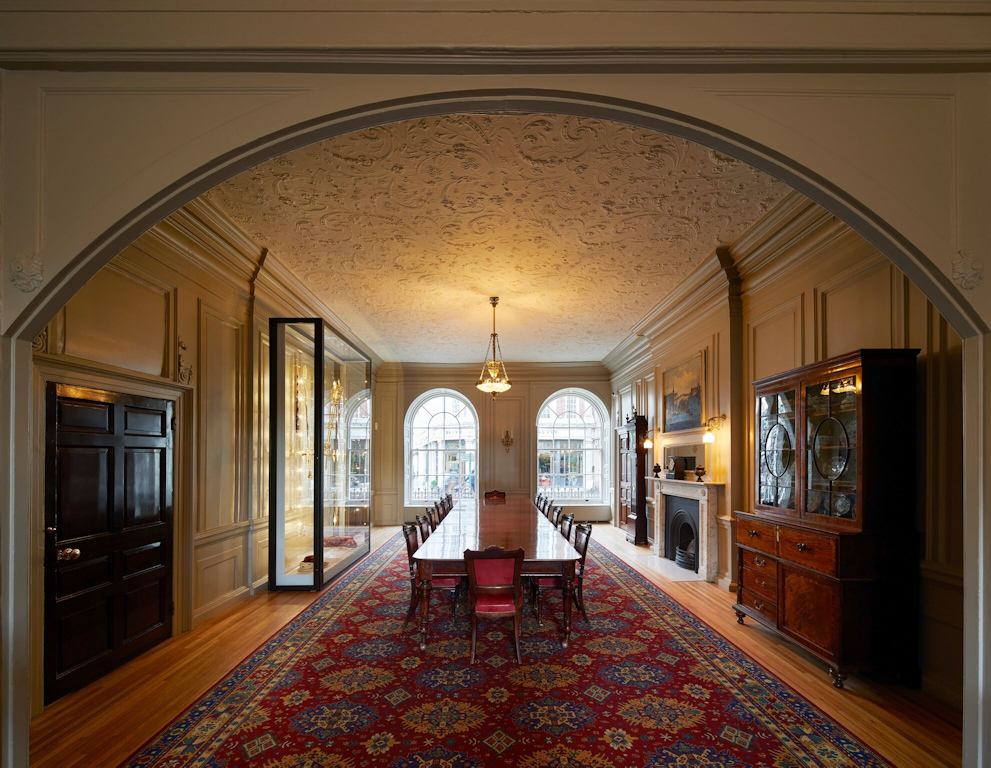
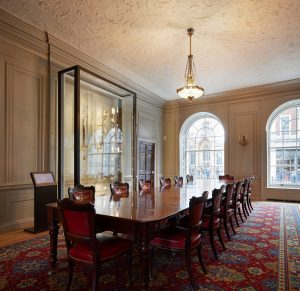 The Mansion House, dominating as it does the beautiful St Helens Square, remained a building visibly hidden, its treasures, history and significance on the story of York being almost forgotten in a city full of antiquity and memory. The building, with its’ treasures, remained a place few visited or gained entry to as the fabric of the building slowly decayed.
The Mansion House, dominating as it does the beautiful St Helens Square, remained a building visibly hidden, its treasures, history and significance on the story of York being almost forgotten in a city full of antiquity and memory. The building, with its’ treasures, remained a place few visited or gained entry to as the fabric of the building slowly decayed.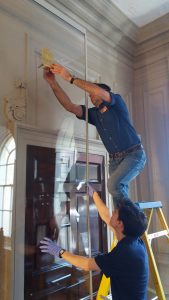 The conditions that the gold and silver and the city regalia were kept in were far from ideal as the location was cramped, did not meet conservation standards and significantly hindered public access to the objects. Because of this issue it was important to display the regalia within a protective case
The conditions that the gold and silver and the city regalia were kept in were far from ideal as the location was cramped, did not meet conservation standards and significantly hindered public access to the objects. Because of this issue it was important to display the regalia within a protective case 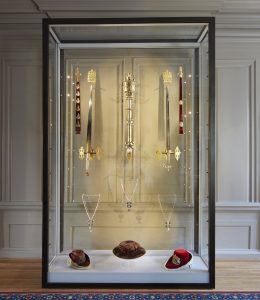 The initial approach to the Arms and Armour Heritage Trust, application for a grant and the subsequent grant funding made the concept a reality. The grant meant that the great trinity of regalia would be on permanent display in a specially designed case for the first time in their history. The installation of the regalia has improved public access, has improved visitor appreciation, interaction and understanding of the items and their significance, whilst allowing the regalia to be displayed to the best conservation standards possible. The display case has enabled public engagement while allowing the regalia to keep their stateliness.
The initial approach to the Arms and Armour Heritage Trust, application for a grant and the subsequent grant funding made the concept a reality. The grant meant that the great trinity of regalia would be on permanent display in a specially designed case for the first time in their history. The installation of the regalia has improved public access, has improved visitor appreciation, interaction and understanding of the items and their significance, whilst allowing the regalia to be displayed to the best conservation standards possible. The display case has enabled public engagement while allowing the regalia to keep their stateliness.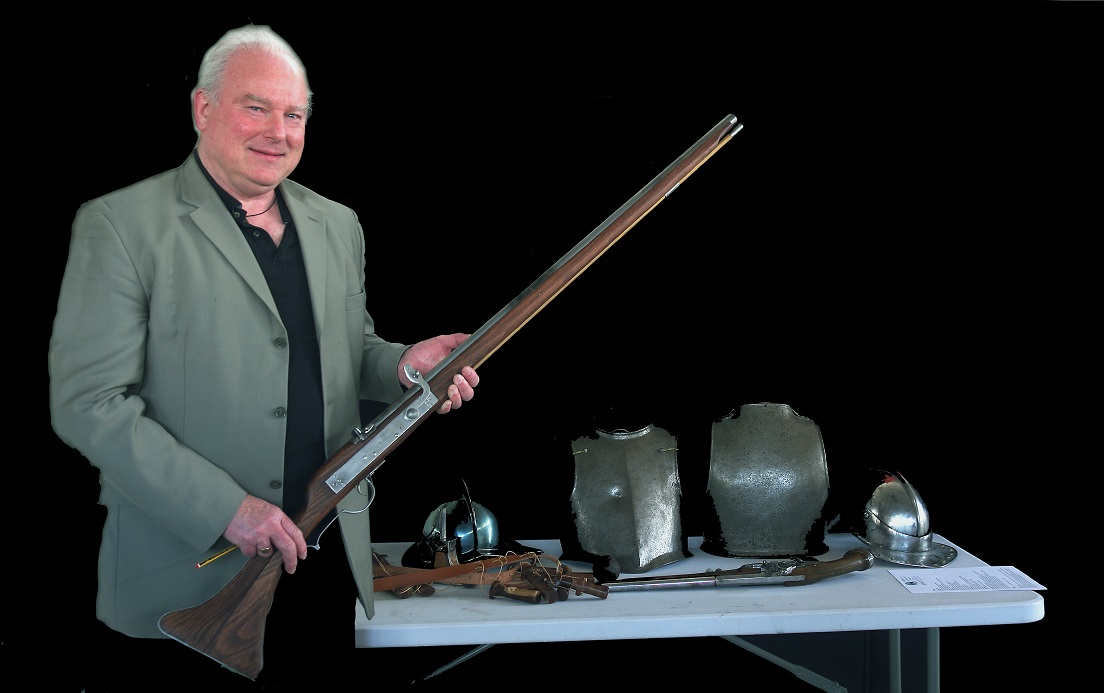
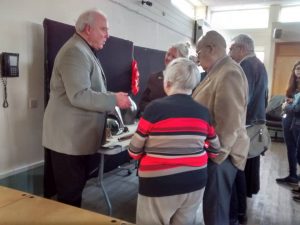 arrows with different heads, a powder flask, bandolier and an inert matchlock musket. These were divided into two collections located in northern and southern England and were created to allow Battlefields Trust regions to demonstrate weapons and armour to the public as part of its charitable aims of preserving, researching and interpreting battlefields as historical and educational resources. The collections, which were focused around the Wars of the Roses and British Civil War periods, allow members of the public to get a sense of the challenges of using such weapons and armour.
arrows with different heads, a powder flask, bandolier and an inert matchlock musket. These were divided into two collections located in northern and southern England and were created to allow Battlefields Trust regions to demonstrate weapons and armour to the public as part of its charitable aims of preserving, researching and interpreting battlefields as historical and educational resources. The collections, which were focused around the Wars of the Roses and British Civil War periods, allow members of the public to get a sense of the challenges of using such weapons and armour.
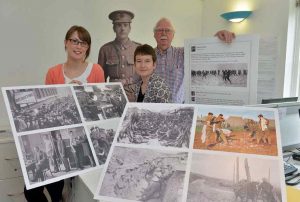
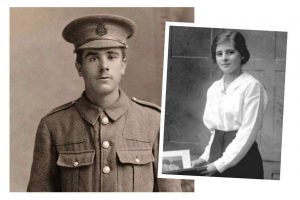

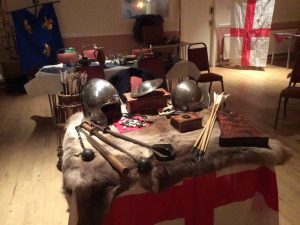 In 2015, to celebrate the 600 anniversary of the battle of Agincourt, we decided to hold a charity night to benefit a local art based charity Move Ahead, based in Outwood, which supports the brain injured.
In 2015, to celebrate the 600 anniversary of the battle of Agincourt, we decided to hold a charity night to benefit a local art based charity Move Ahead, based in Outwood, which supports the brain injured.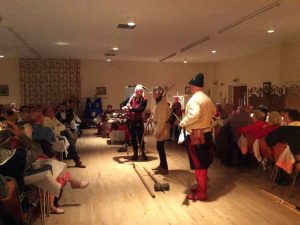 ause of it about 200 people now appreciate the importance of the Battle of Agincourt and a little of what it was like to live in
ause of it about 200 people now appreciate the importance of the Battle of Agincourt and a little of what it was like to live in
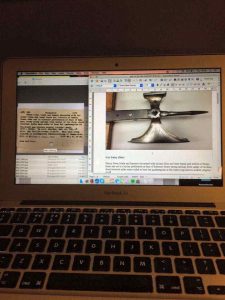
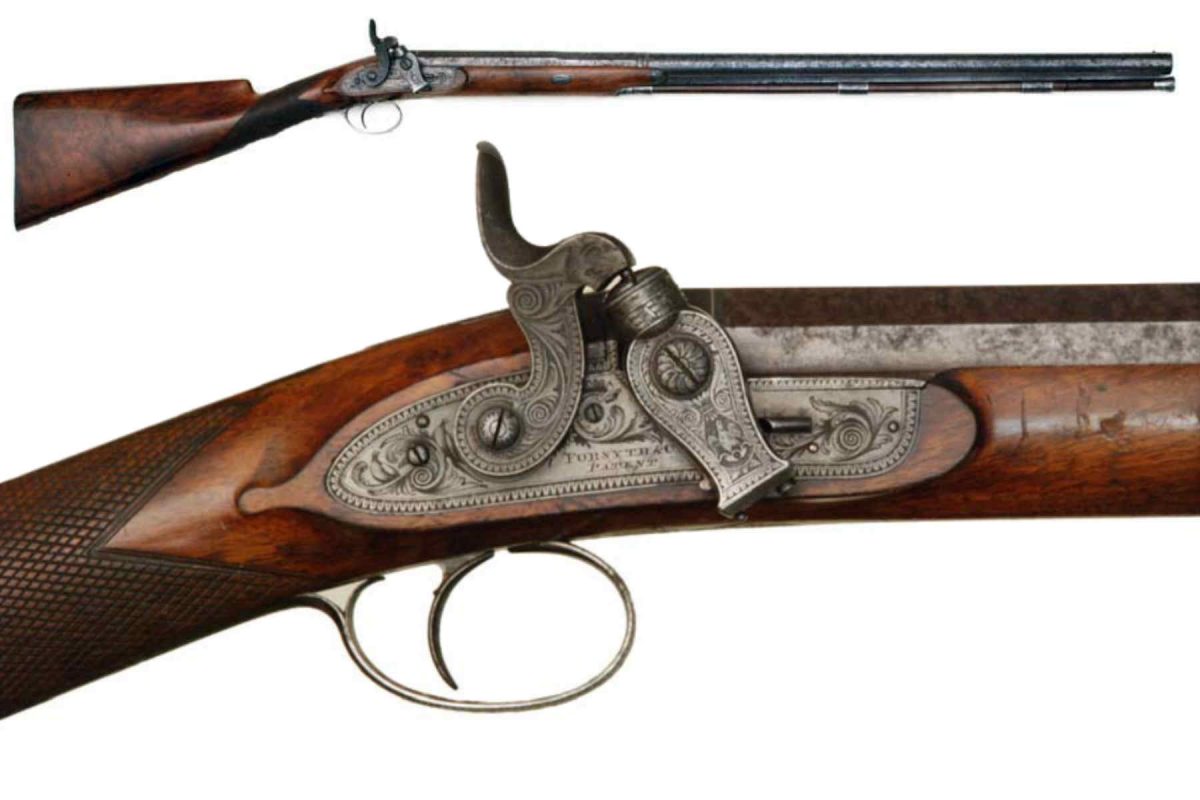
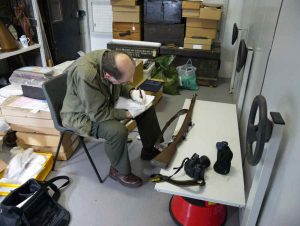
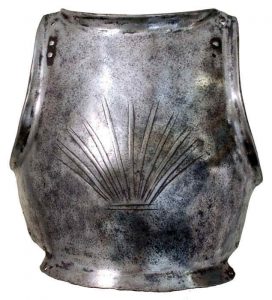 started. It was agreed that the work of cataloguing would be done for free –
started. It was agreed that the work of cataloguing would be done for free –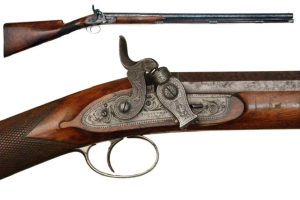
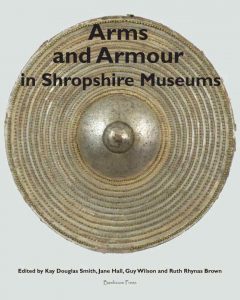 The book, Arms and Armour in Shropshire Museums, has now been published and is available from Basiliscoe Press – ISBN 978-0-9551622-4-4
The book, Arms and Armour in Shropshire Museums, has now been published and is available from Basiliscoe Press – ISBN 978-0-9551622-4-4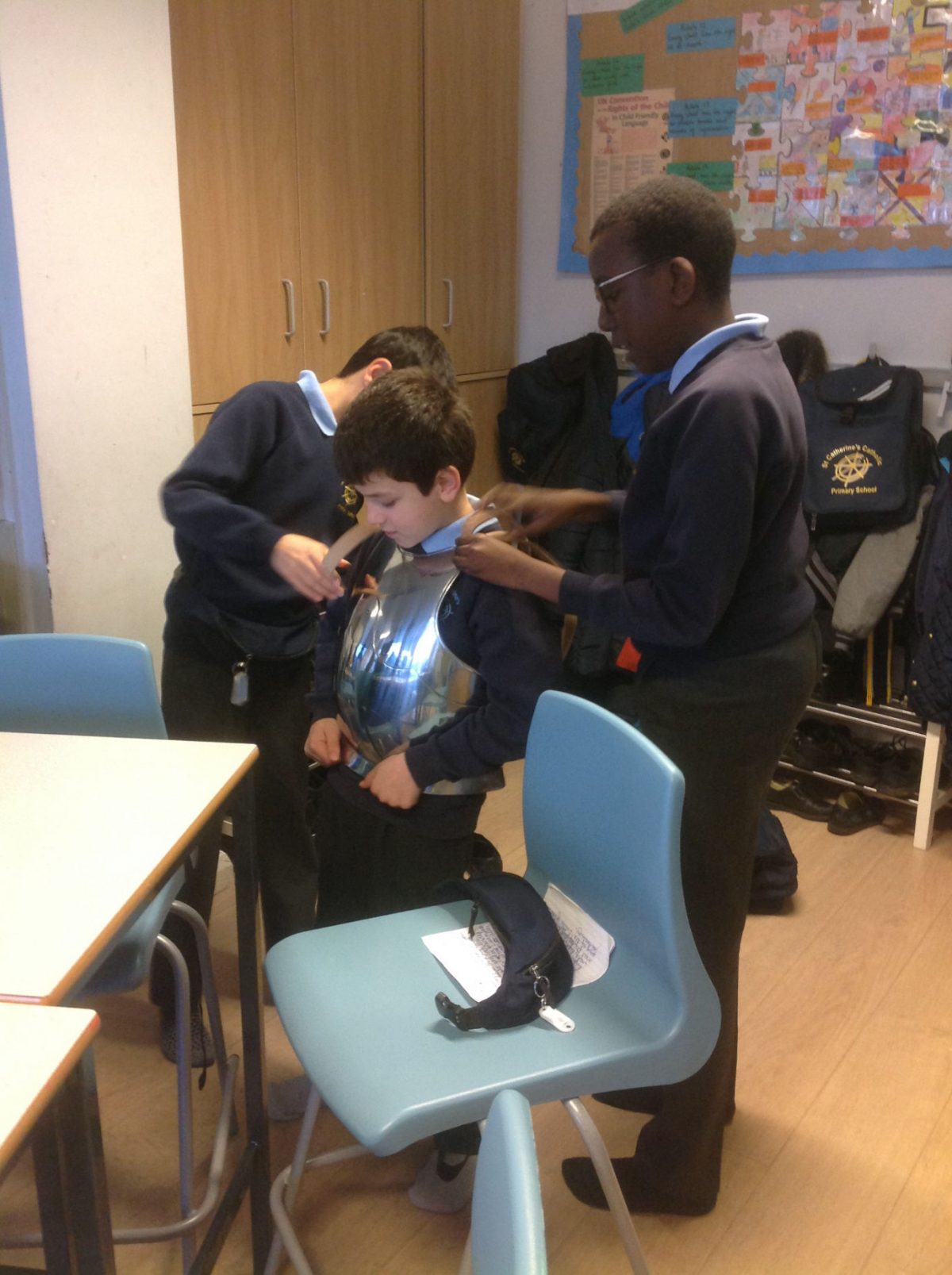
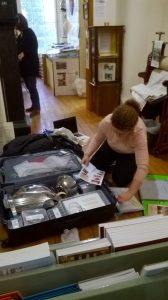
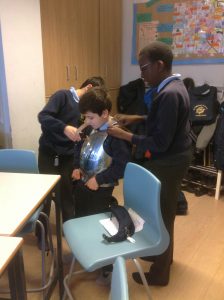
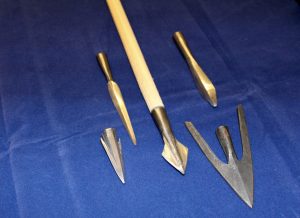 The Loan Box is usually loaned to a school for a half term; this allows the school to build curricular activity around the topic and allows more than one class/year to be involved. One school created a whole-school museum over a weekend inspired by the Loan Box. A number of schools have also used the Box on a weekly basis. Some twelve local schools have used the Box over the last couple of years.
The Loan Box is usually loaned to a school for a half term; this allows the school to build curricular activity around the topic and allows more than one class/year to be involved. One school created a whole-school museum over a weekend inspired by the Loan Box. A number of schools have also used the Box on a weekly basis. Some twelve local schools have used the Box over the last couple of years.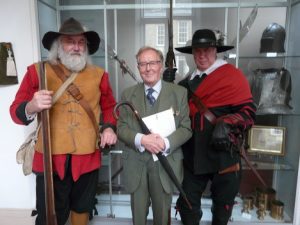 Robert Hardy, star of All Creatures Great and Small and more recently Harry Potter, confessed to an audience in Stow-on-the-Wold that he communicates with the ghosts on ancient battlefields.
Robert Hardy, star of All Creatures Great and Small and more recently Harry Potter, confessed to an audience in Stow-on-the-Wold that he communicates with the ghosts on ancient battlefields.